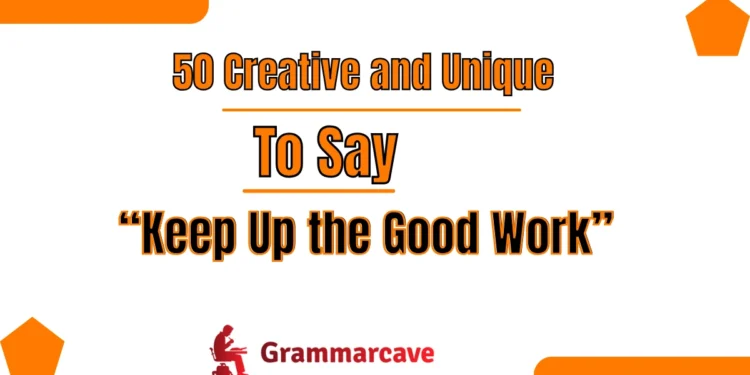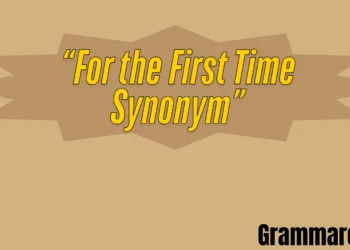Let’s get real—statements like “Keep up the good work!” or “Great job” are commonplace in the workplace. Yet, as much as they intend to sound positive, these phrases can simply be autopilot praise.
To have recognition stand out, it is important to mix things up. A little creativity can make employees feel appreciated. As we all know, genuine appreciation goes beyond what is being expressed and relies heavily on the manner of expression.
Perhaps one of the new members of your team is smashing their targets, or maybe a long-time employee recently completed an extraordinary feat. Either way, affirmation has the power to improve motivation, reinforce positive behaviours, and strengthen loyalty.
The Power of Consistent Engagement in the Workplace
Research confirms what great leaders already know: engaged employees drive better results. A notable study revealed that happy employees are 13% more productive, with researchers finding they work faster and achieve higher conversion rates. Professor Jan-Emmanuel De Neve observed that employee happiness directly translates to better performance and business outcomes.
But productivity is just the beginning. A positive work environment also
- Strengthens retention—employees who feel valued stay longer.
- Deepens engagement—connected teams go the extra mile
- Creates a ripple effect—one team member’s enthusiasm can uplift an entire department and even improve customer experiences
Building This Culture Starts With Engagement
The key lies in meaningful connections between employees and their work. Communication is the foundation of this connection. When people feel emotionally invested in their work, their motivation and commitment soar. Regular, two-way dialogue—whether in person, virtually, or through multiple channels—delivers powerful benefits:Also read and know about Thomas’s or Thomas’?
- Strengthens Trust—Ongoing conversations create transparency and mutual understanding between teams and leadership.
- Reduces Turnover—Employees with consistent manager interaction are less likely to seek opportunities elsewhere.
- Drives Efficiency—Clear communication eliminates confusion and keeps everyone aligned on priorities.
- Spurs Innovation—Employees who feel heard are more likely to share creative ideas and solutions.
For business success, it is clear investing in employee engagement isn’t just lovely—it’s necessary. Companies create environments where people and performance thrive by prioritizing open communication and emotional connection.
50 “keep up the good work” quotes
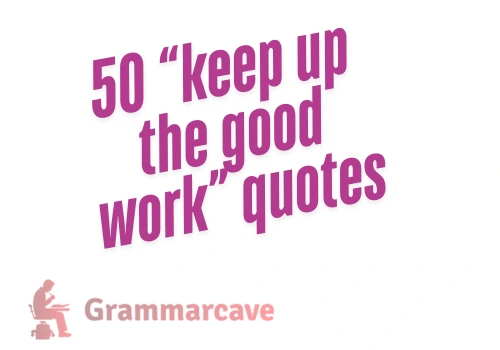
As is the case with virtually all professions in the world, hard work, persistence, and dedication have been valued across all periods. From Michelangelo and Shakespeare to Pele and Dwayne The Rock Johnson, there is no shortage of people who have captured the essence of “keep up the good work” in the form of unique quotes.
If you are a people manager looking for fresh tactics to motivate your team or an employer facing retention challenges, remember these quotes, as they serve as a reminder that every accomplishment comes with effort and dedication over time. Use them as motivational slogans and place them in break rooms or even in the email signatures of the team leaders.
Here are 50 ways political leaders, philosophers, and others have captured the meaning of “keep up the good work.“
1. Progress is built one small win at a time – keep stacking yours!” – Sarah Johnson, Leadership Coach
2. You’re writing your success story with every effort—don’t stop now!” – Michael Chen, Author
3. That spark in you? Keep fanning those flames.” – Priya Kapoor, Motivational Speaker
4. The world needs your particular kind of awesome – keep sharing it.” – David Martinez, Entrepreneur
5. You’re not just working—you’re creating something meaningful.” – Jamal Williams, Business Strategist
6. “Rough seas make skilled sailors—you’re learning to navigate brilliantly.” – Captain Emily Soo, Retired Navy Officer
7. “Your resilience is quietly becoming your superpower.” – Dr. Rebecca Tan, Psychologist
8. “Every obstacle you face is adding pages to your book of victories.” – Carlos Mendez, Life Coach
9. “They said it couldn’t be done? You’re proving them wrong daily.” – Alicia Fuentes, Tech CEO
10. “The harder the climb, the sweeter the view – keep ascending!” – Mark Reynolds, Mountaineer
11. “Your ideas are like seeds – keep watering them.” – Linh Nguyen, Creative Director
12. “That creative spark of yours? It’s starting wildfires of inspiration.” – Diego Ortiz, Artist
13. “The world needs your unique perspective – keep sharing it boldly.” – Sophia Kim, Gallery Owner
14. “You’re not just making things—you’re creating magic.” – Raj Patel, Design Thinker
15. “Every stroke of genius begins with showing up – and you keep showing up.” – Emma Wilson, Author
16. “Teams thrive when people like you bring their A-game daily.” – Coach Andre Davis
17. “Your energy is the secret sauce that makes this team special.” – Nina Rodriguez, HR Director
18. “Colleagues like you make work feel like play.” – Tom Harris, Team Leader
19. “You’ve got this rare gift of making everyone around you better.” – Dr. Lisa Wong, Organizational Psychologist
20. “The way you lift others? That’s leadership in action.” – James Peterson, Executive Coach
21. “Rome wasn’t built in a day, but look at your foundations growing!” – Professor Elena Ricci
22. “Consistency is your superpower – keep wielding it.” – Marcus Boone, Performance Coach,
23. “Future you is thanking present you for not giving up.” – Olivia Park, Life Strategist
24. “You’re not just working—you’re compounding excellence.” – Sanjay Gupta, Financial Analyst,
25. “The seeds you’re planting today will become mighty oaks.” – Grandma Pearl (Community Elder)
26. “You’re crushing it so hard, we might need to call a doctor!” – Jake Wilson, Stand-up Comedian
27. “If awesome were a sport, you’d be Olympic gold material.” – Coach Ricky Thompson
28. “Are you a magician? Because your results are appearing like magic!” – Mia Chen, Office Manager,
29. “Warning: Your productivity is causing envy in the break room.” – Anonymous Coworker
30. “You’re making the rest of us look bad (in the best possible way).” – Office Prankster Dave
31. “Success is the sum of small efforts repeated daily.” – Robert Collier (Author)
32. “Keep on keeping on.” – Curtis Mayfield (Musician)
33. “Pressure is a privilege – and you’re earning yours.” – Tennis Star Serena Williams
34. “The only way to finish strong is to keep going when it’s hard.” – Marathoner Eliud Kipchoge
35. “Persistence is the hard work after hard work.” – Newt Gingrich
36. “The ripples from your work are touching lives you’ll never meet.” – Teacher Maria Gonzalez
37. “You’re not just doing a job – you’re changing stories.” – Social Worker Jamal Carter
38. “The care you put in matters more than you know.” – Nurse Emily Johnson
39. “Your efforts today are someone’s hope for tomorrow.” – Pastor William Thomas
40. “The world needs more people who show up like you do.” – Community Leader Aisha Mohammed
41. “Every skill you’re building is another key to future doors.” – Career Coach Rachel Lee
42. “You’re not just climbing the ladder -you’re building a better one.” – Tech Leader Arun Patel
43. “That expertise of yours? It’s becoming your signature.” – Industry Veteran Frank Wilson
44. “Promotions come and go, but your growing capability is forever.” – Executive Sandra Wu
45. “You’re not just working for today – you’re investing in all your tomorrows.” – Financial Advisor Luis Gomez
46. “Your hustle is writing checks your success will cash.” – Startup Founder Tina Roberts
47. “Every no gets you closer to your next yes – keep going.” – Serial Entrepreneur Dev Jones
48. “That vision of yours? It’s coming into focus because you keep working it.” – Angel Investor Sophia Chang
49. “Most quit right before the breakthrough – but not you.” – Business Coach Andre Miller
50. “You’re not building a business – you’re building a legacy.” (CEO Naomi Williams)
Helping Your Team Overcome Common Workplace Challenges
Work shouldn’t feel like an obstacle course. Yet many employees face the same frustrating roadblocks that drain motivation and slow progress. You can smooth the path by recognizing these challenges and proactively addressing them. Here are the four significant hurdles teams commonly face—plus practical ways to help your people overcome them:
1. “I Don’t Know How to Do This” (Lack of Training)
What Happens:
Employees get thrown into tasks without proper guidance, leading to stress, mistakes, and frustration.
How to Fix It:
- Onboard with care: A solid orientation sets the tone. Pair new hires with mentors.
- Invest in growth: Offer regular skills training—not just during hiring. Learning shouldn’t stop after Day 1.
- Make help easy to find: Create a go-to resource hub (checklists, video tutorials, FAQs) so no one feels stranded.
2. “Wait… What Exactly Do You Want?” (Unclear Expectations)
What Happens:
Vague instructions leave people guessing like being asked to “paint something creative” with no direction.
How to Fix It:
- Set clear goals. Use the SMART framework (Specific, Measurable).
- Check for understanding: “How would you summarize this task in your own words?” ask.
- Update as needed: Expectations evolve. Schedule quick check-ins to realign.
3. “No One Told Me That!” (Poor Communication)
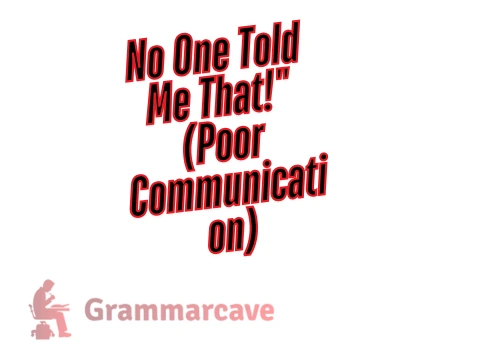
What Happens:
Teams work in silos, miss updates, or hesitate to speak up, leading to wasted effort.
How to Fix It:
- Over-communicate (seriously): Repeat key messages across emails, meetings, and chats.
- Create safe spaces: Encourage questions with “No dumb questions here!” vibes.
- Listen actively. Sometimes, employees need to vent. A simple “Tell me more” builds trust.
4. “I’m Running on Empty” (Burnout)
What Happens:
Chronic stress leads to exhaustion, cynicism, and—ironically—lower productivity.
How to Fix It:
- Model balance: If you email at midnight, they’ll feel pressured to do the same. Respect boundaries.
- Encourage real breaks: Discourage lunch-at-desk culture. Even 10-minute walks recharge focus.
- Recognize effort: A heartfelt “You nailed this!” or a small reward reminds them their work matters.
5. The Golden Thread? Communication.
All these obstacles share one root cause: misalignment. Whether it’s unclear goals, missing information, or unspoken stress, the solution starts with talking—and listening—more.
Try This Today:
- For training gaps: “What’s one skill or tool that would make your job easier?”
- For clarity: “Let me rephrase this to ensure I’m clear…”
- For burnout: “How are you doing? No corporate talk allowed.”
When you remove these friction points, you don’t just fix problems—you free your team to do their best work.
Cultivating a Positive Workplace Culture: A Human-Centric Perspective
Ending the workplace wellness paradox involves addressing the fundamental issue—optimizing someone’s work isn’t about working to get more out of them. It is about creating an environment where they feel truly supported, valued, and inspired. Now, think about the life you’ve had of the best manager or mentor. Most likely, they weren’t just managing your work. You felt trusted, understood, and wanted to work. That is the form of leadership we are discussing.
1. Build Psychological Safety: The Foundation of Great Work
People can’t do their best work if they’re walking on eggshells. Psychological safety—believing you won’t be punished for speaking up—is the bedrock of innovation and engagement.
How to create it:
- Normalize vulnerability: Share your own mistakes openly. Hey, team, I want to share something I messed up last week—here’s what I learned.
- Protect minority opinions: “I want to hear from someone who hasn’t spoken yet” prevents groupthink and surfaces fresh ideas.
2. Master the Art of Meaningful Recognition
Recognition isn’t about empty platitudes or generic “good jobs.” It’s about showing people you truly see their contributions.
What works:
- Be specific and timely: Instead of “Great presentation,” try “The way you explained the data with that customer story at 2:15 made everything click for me.”
- Make it proportional: small wins deserve quick praise (“Thanks for catching that error!”), and significant efforts warrant celebration (team lunch to hit a milestone).
- Personalize it: Some love public shoutouts, while others prefer handwritten notes. Learn what resonates.
- Pro tip: Keep a “kudos file” for each team member—jot down small wins throughout the week so your recognition stays fresh and detailed.
3. Remove Roadblocks Before They Become Frustrations
Great leaders don’t just assign work—they actively clear the path.
Try this approach:
- Ask, “What’s one thing making your job harder than it needs to be?”
- Listen: You’ll hear about broken processes, missing tools, or unclear priorities.
- Act: Even minor fixes (“I’ll get you access to that software today”) build trust.
4. Connect Work to Purpose
People will grind through tasks but pour their hearts into meaningful work.
Bridge the gap:
- Share customer stories. “That feature you built? It helped a single mom run her small business more efficiently.”
- Show the bigger picture: “This project contributes to our goal of reducing customer wait times by 30%.”
- Celebrate impact: “Because of your work this quarter, 500 more students have access to our tutoring program.”
5. Fuel Growth Through Career Conversations
The most motivating question is, “Where do you want to go, and how can I help you get there?”
Make it real:
- Schedule dedicated growth talks (separate from performance reviews).
- Identify skills to develop: “You’re great at analytics—want to stretch into people management?”
- Create learning opportunities: Conference attendance, stretch assignments, or mentorship.
6. Cultivate Team Connection
People work harder for teammates they care about.
Build bonds that matter.
- Start meetings with personal check-ins: “What’s something good from your weekend?”
- Create peer recognition rituals: “Who helped you out this week?”
- Schedule regular non-work time: Monthly potlucks or volunteer days lower walls between colleagues.
7. Lead with Energy and Care
Your mood sets the tone. Teams mirror their leader’s emotional state.
Energy management for leaders:
- Start meetings enthusiastically: “I’m excited about what we’ll accomplish today!”
- Notice when people struggle: “You seem stressed—what would help right now?”
- Protect your well-being: You can’t pour from an empty cup.
The Ripple Effect

When you invest in creating this kind of environment, something magical happens. People start
- Taking the initiative because they feel ownership
- Supporting each other without being asked
- Bringing creative solutions to problems
- Staying longer because they’re invested
Remember: There’s no finish line here. Striving to create a great workplace takes work and results from continuous, consistent effort.
Your Next Step: Pick one element from above and implement it this week. It could be giving more specific praise or having a career conversation. Small steps lead to significant transformations.
How to Keep Your Best People: A Human Approach to Employee Retention?
Letting go of productive employees has negative consequences—for recruitment, training, and team morale. In reality, employees don’t abandon roles—they abandon workplaces that do not appreciate them. The good news? You can adopt the right approach to cultivate a workplace where employees remain and wish to develop.
1. Create a Workplace That Feels Like Home (Without the Laundry Piles)
People stay where they feel seen, heard, and appreciated.
How to make it happen:
- Pay fairly, but remember that money isn’t everything. Competitive salaries prevent resentment, but it’s the daily environment that keeps people. A well-paid but miserable employee will still leave.
- Make the physical (or virtual) space welcoming. Natural light, comfortable chairs, and quiet spaces for focus show you care about their well-being. If they are remote, send home office stipends or care packages.
- Protect work-life boundaries: Respect personal time. Do not ask “quick questions” at 10 PM. unless they are truly urgent.
2. Flexibility Is the New Currency
The 9-to-5 office grind isn’t just outdated—it’s a dealbreaker for many.
Ways to flex (even in rigid industries):
- Remote/hybrid options: Let people work from where they’re most productive.
- Flex hours: Early birds can start at 7 AM; night owls can shift later.
- Compressed weeks: Four 10-hour days instead of five 8-hour ones.
- “Life happens” flexibility: Let someone leave early for a kid’s recital without docking PTO.
Can’t offer remote work? Get creative:
- Staggered breaks so people can run errands
- Seasonal flexibility (quieter months = more leeway)
- “Flex perks” are like late starts after big projects wrap.
3. Feedback That Feels Like a Conversation (Not a Performance Review)
Nobody likes surprise feedback—or radio silence.
How to do it right:
- Ditch the “feedback sandwich” (praise-criticism-praise). It feels manipulative. Instead, be direct but kind: “Here’s what’s working, and here’s where we can adjust.”
- Make it a two-way street: Ask, “How can I better support you?” and implement suggestions.
- Normalize real-time feedback: Don’t save it for quarterly reviews. A quick “That client email was perfect—let’s always handle it that way” is more effective than formal notes.
4. Recognition That Doesn’t Feel Like a Participation Trophy
Generic “Employee of the Month” programs often backfire. Real recognition is personal and timely.
Ideas that land:
- Specific shoutouts: “Maria stayed late to fix the shipment error—that saved us $5K.”
- Unexpected rewards: Spot bonus for crushing a goal or a surprise afternoon off after a grind.
- Peer-to-peer kudos: A Slack channel where teammates can thank each other publicly.
Pro tip: Learn how each person likes to be recognized. Public praise mortifies some; others thrive on it.
5. Growth That’s More Than Just Promotions
Career stagnation is a top reason people leave—but growth isn’t just about titles.
Ways to develop people (without a ladder to climb):
- Skill-building: Sponsor courses, certifications, or conference attendance.
- Stretch assignments: “You’re great at X—want to lead a project around it?”
- Internal mentorships: Pair junior and senior staff for knowledge sharing.
- Horizontal moves: Let someone in marketing try a product development sprint.
6. Leadership That Listens (Not Just Talks)
Employees quit bosses, not jobs. The best managers are coaches, not commanders.
Traits of a retention-friendly leader:
- Approachable: “My door is open” means nothing if you’re always “too busy.”
- Transparent: Share company challenges—people respect honesty.
- Advocates: fights for their team’s raises, resources, and work-life balance.
7. Fairness That’s Obvious to Everyone
Nothing breeds resentment faster than perceived favouritism.
How to keep it fair:
- Document processes: How are raises decided? Promotions assigned? Make it clear.
- Admitting mistakes: “We should’ve handled that differently” builds trust.
- Standardize flexibility: If Jill gets to work remotely, can Juan? (Unless there’s a clear job difference.)
8. Support That Extends Beyond the Job
People are whole humans—not just “resources.”
Ways to show you care:
- Mental health support: EAP programs, therapy stipends, or just normalizing “I need a mental health day.”
- Life-stage support: Parental leave, eldercare resources, or student loan help.
- Crisis response: When someone’s going through a divorce, illness, or loss, flexibility matters more than ever.
The Bottom Line
Retention isn’t about fancy perks or retention bonuses—it’s about consistently showing up for your people. When employees feel valued as humans (not just workers), they’ll reward you with loyalty, hard work, and even referrals of other great talent.
Start small, but start today:
- Pick one person and ask, “What’s one thing we could change to make this job better for you?”
- Then actually do something with that answer.
Example Email to an Employee
Recognition from the public eye can be valuable for any individual, but a private appreciation note carries a special significance. Sending a personal note demonstrates that appreciation is genuine and not for formality.
Here’s the impressive note you could send to one of your top team members.
Subject: You’re Making a Real Difference
Hi Dan,
Dan, I am taking this opportunity to express my gratitude for your efforts on the team. You have great respect for work and an even greater appreciation for the things around you. Hence, you work hard, and everything you do is praiseworthy. It is astonishing how much effort and determination you put into solving problems; honestly, it creates a positive atmosphere.
I am particularly pleased with how you manage and swiftly complete complex tasks, such as specific projects/tasks. Even with shifting timelines/clients changing expectations, you were able to surpass expectations in every way possible. Because of you, we were able to get that big client/ship and that project ahead of schedule. That is remarkable and fortuitous for all of us. You need to realize how much impact your valuable work has on me and the entire workforce. You are inspiring because you have single-handedly defined every level of achievement and what it means to reach higher. If, in any case, work-related matters such as getting materials, help, or even a neutral viewpoint arise, do call me. I will unconditionally fight for you. Thanks for being you, Dan. We are fortunate enough that calling you a team member is a greatly esteemed blessing.
Warmly,
Annabelle.
How do we say “Keep Up the Great Work” Around the World?
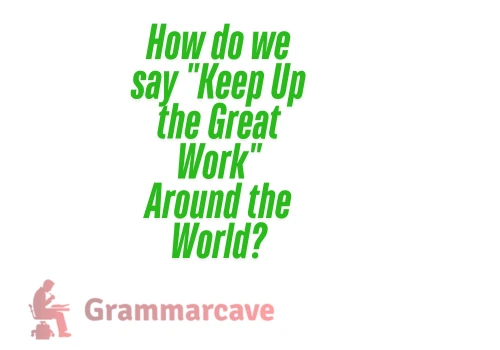
Words of encouragement may have a universal meaning, but listening to the proper tone is equally important. Here is an authentic way to encourage a person in Spanish, French, and German:
En Español (Spanish)
“¡Sigue así, vas genial!”
(Literal: “Keep going, you’re doing great!”)
Perfect for: Casual praise with Latin American colleagues
“Tu esfuerzo está dando frutos.”
(Your effort is bearing fruit.)
Use when: Recognizing long-term progress.
“No cambies nada, tu enfoque es perfecto.”
(Don’t change anything – your approach is perfect.)
Great for: Creative workers hitting their stride
En Français (French)
“Continue comme ça, c’est parfait!”
(Keep it up, it’s perfect!)
The Parisian office’s favourite
“Ton travail fait toute la différence.”
(Your work makes all the difference.)
For: When you want to emphasize the impact
“Bravo pour ta persévérance!”
(Cheers for your perseverance!)
Ideal for: Tough projects requiring grit
Auf Deutsch (German)
“Weiter so – das ist Spitzenklasse!”
(Keep going – this is top class!)
German precision meets praise.
“Dein Einsatz beeindruckt uns.”
(Your dedication impresses us.)
Formal but warm for DACH regions
“Bleib dran, du schaffst das!”
(Stay with it, you’ll make it!)
The perfect motivational push
FAQs
Is “Keep Up the Good Work” Offensive or Demanding?
Not at all! While the phrase might seem simple, it carries positive intent. Here’s why it’s generally well-received:
- It’s Encouraging, Not Pushy
- The phrase focuses on continuation rather than demanding more. It implies, “What you’re doing is working—stay the course!”
- A Recognition of Current Success
- It’s less about pushing harder and more about validating existing efforts. The subtext is, “I’ve noticed your great work, and I want you to know it matters.”
- Tone Matters More Than Words
- If said warmly, it feels supportive. It might fall flat if mumbled absentmindedly—but that’s true of any praise.
When Could It Miss the Mark?
- If overused (sounding like an automatic response)
- If not paired with specifics (“Keep it up—your client reports are always thorough!” lands better)
Bottom Line: It’s a harmless, positive phrase—but like any feedback, it is most impactful when authentic and tailored on occasion.
Better yet, consider mixing it up with “You’re on a roll!” or “This is exactly the kind of work we love to commend.”
How to Gracefully Respond to “Keep Up the Good Work”?
Acknowledge your efforts with this phrase: Into a meaningful exchange, your response can turn into a simple comment. Here’s how to reply with authenticity:
For Casual/Peer Recognition:
- Thanks! That means a lot coming from you.
- Appreciate that! I’m enjoying this project.
- Will do! Same to you—love what you’re doing with [their work].
When Your Boss Says It:
- Thank you! Is there anything specific you’d like to see more of?
- I appreciate the feedback! Let me know if you’d like any adjustments.
- Glad to hear it! If you have suggestions, I’m all ears.
To Show Enthusiasm:
- Absolutely—this work excites me!
- You got it! I’m pumped to keep this momentum going.
- Thanks for the encouragement—more great stuff is coming!”
If You Want to Dig Deeper:
- I appreciate that! What’s stood out to you so far?
- Thanks! Any areas you think I could take to the next level?”
Why It Works:
- Gratitude first – A simple “thanks” validates the praise.
- Optional engagement—lets you keep it light or open a growth conversation.
- Positive tone – Maintains good vibes while leaving room for feedback.
- Pro Tip: Match their energy. Suppose it’s a quick comment, a smile, and “Thanks!” work. If they seem open, use it as a chance to connect further.
Why is it essential for managers and leaders to praise employees?
Closing the Feedback Gap
- Most employees operate in an information vacuum, unaware of how their contributions measure up. Regular, specific praise:
- Acts as a performance GPS, helping people navigate expectations
- Highlights what “great work” looks like in practice
- Builds confidence by validating strengths
Behavioral Reinforcement Engine
Strategic recognition:
- Scientifically reinforces productive habits (what gets praised gets repeated)
- Gently discourages ineffective approaches without direct criticism.
- Creates a culture where excellence becomes contagious
The Ripple Effects
- Consistent appreciation triggers powerful organizational benefits:
- Productivity surge (recognized employees give 12% more discretionary effort)
- Retention boost (teams with strong recognition are 56% less likely to seek new jobs)
- Collaboration spark (appreciated employees become peer mentors)
The Clarity Factor
- Unlike vague annual reviews, timely praise:
- Provides real-time course correction
- Eliminates second-guessing about performance
- Makes expectations tangible through concrete examples
The Leadership Imperative
- Great managers understand that recognition isn’t just about making people feel good – it’s about
- Creating psychological safety for risk-taking
- Developing self-aware, growth-oriented teams
- Building trust through visible fairness
What are some synonyms for “keep up the good work”?
For Ongoing Excellence
- You’re crushing it -don’t change a thing!
- This is exactly the kind of work we need more of.
- You’ve found your groove – keep riding this wave.
- Your consistency is impressive.
- “You’re operating at a whole other level.”
For Those Nearing Goals
- The finish line’s in sight – keep pushing!
- You’re so close to something amazing.
- This is your breakthrough moment – keep going.
- All your effort is about to pay off.
- The hardest part’s done – now seal the deal.”
For Steady Progress
- You’re building something special here.
- Every step forward matters – and you’re making them.
- This progress doesn’t happen by accident.
- You’re turning small wins into big results.
The compound effect of your work is powerful.”
For Motivational Support
- You’ve got what it takes – trust the process.
- This challenge is no match for your skills.
- Your perseverance is inspiring the whole team.
- I believe in what you’re creating.
- You’re making the difficult look easy.”
Conclusion
Reflection reveals times when authentic recognition has been given. A client may have emailed you, “You saved the day,” or perhaps a coworker complimented you. Do you remember the feeling? The magic we get to create in people’s lives with meaningful and straightforward recognition. We provide recognition not only because it is the right thing to do but because, in essence, the good we do now can radiate a greater impact in the future. That “wonderful job” pat on the back today could trigger a turning point for someone the next day.
And in the workplace, when our team wins, we all win together. The beautiful part? You don’t need a fancy program or a big budget to make an impact. Just:
- Notice the good stuff (it’s happening all around you)
- Say it out loud (specifics matter!)
- Make it a habit (not just when reviews come around)
If you’re from an organization trying to build a team that shares the same passion as you, we would be more than glad to assist you. Our staffing solution platform puts you in touch with vetted and ready-to-go professionals, so you don’t have to spend much time trying to hire and can focus on creating those “great job” moments. One happy client said, “With Jobble, we get reliable team members who want to be here – it’s changed how we staff our busiest events.”

